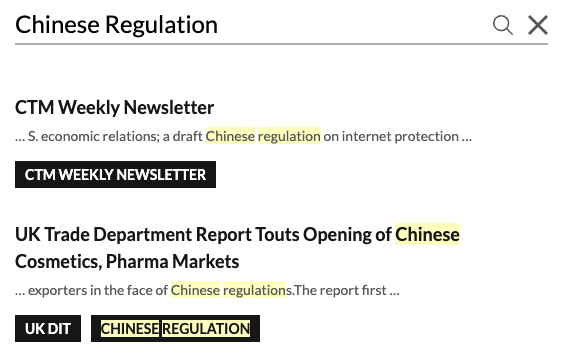On July 23, China released its first negative list for cross-border trade in services. The document entitled Special Administrative Measures for Cross-Border Services Trade at Hainan Free Trade Port (Negative List) (2021 Edition) (海南自由贸易港跨境服务贸易特别管理措施(负面清单)) will only apply within the Hainan free trade port and will take effect on August 26, 2021. The negative list is designed to promote the liberalization of services trade, according to Chinese officials. Under a negative list approach, any sectors not on the list are liberalized.
The negative list applies to trade in services provided through cross-border trade, consumption abroad, or the presence of natural persons. (In comparison, foreign investments would be governed by the negative list for foreign investment access in Hainan Free Trade Port and the nation-wide Market Access Negative List.)
The negative list includes 70 subcategories in 11 major sectors, including transportation, information technology, finance, construction, education, business and legal services. A full translation of covered sectors can be found here.
Overseas businesses and individuals will be allowed to provide services beyond the sectors on the list after August 26, and such services and service providers shall be treated on equal footing with domestic peers, according to the document.
At a State Council Information Office press conference on the negative list, the Vice Minister of MOFCOM and Deputy International Trade Representative Wang Shouwen said that the negative list exceeded China’s WTO commitments in approximately 120 sub-sectors among the total of 160 sub-sectors. In particular, it has a higher level of openness than China’s WTO accession commitments in more than 70 sub-sectors, among the 100 sub-sectors China promised to open pursuant to its accession. It also opened more than 40 sub-sectors out of the other 60 sub-sectors in which China had not made any WTO commitment. The negative list also exceeds the openness level of most free trade agreements signed by China in terms of services trade, according to Wang. China has signed 19 free trade agreements with 26 countries and economies, all of which adopted positive lists for services trade, which many experts consider to be less liberalizing than a negative list approach.
As an example of how the list leads to more openness in services trade, previously, only legal entities registered in China could engage in customs declaration business. Now the requirement is removed, meaning overseas customs brokers can directly conduct customs declaration business in Hainan Free Trade Port without registering a company first. Similarly, foreign ship inspection agencies were barred from employing or sending personnel to conduct ship inspection activities in China, without registering a ship inspection company in China first. This requirement is also removed. These changes are designed to facilitate trade and lower business costs.
The negative list also loosens restrictions for foreign individuals to provide services in the Hainan Free Trade Port. For example, foreign individuals are now allowed to take qualification examinations for registered metrology, survey and design registered engineers, asset appraisers, veterinary, and registered urban and rural planners in China. Foreign individuals are also allowed to open securities accounts or futures accounts in the region, and can apply for certificates for securities investment consulting and futures investment consulting.
Tang Wenhong, director of MOFCOM's department of pilot free trade zones and free trade ports, said during the same press conference that the authorities would follow up with the implementation of the Hainan negative services list, and create negative lists for trade in services that would apply to other free trade zones and the whole of the country later.
China issued the Comprehensive Pilot Program for Opening up the Service Industry in Hainan Province (海南省服务业扩大开放综合试点方案) and Notice on Several Measures to Promote Trade Liberalization and Facilitation of Hainan Free Trade Port (关于推进海南自由贸易港贸易自由化便利化若干措施的通知) in April, both of which were designed to promote services trade in Hainan.

